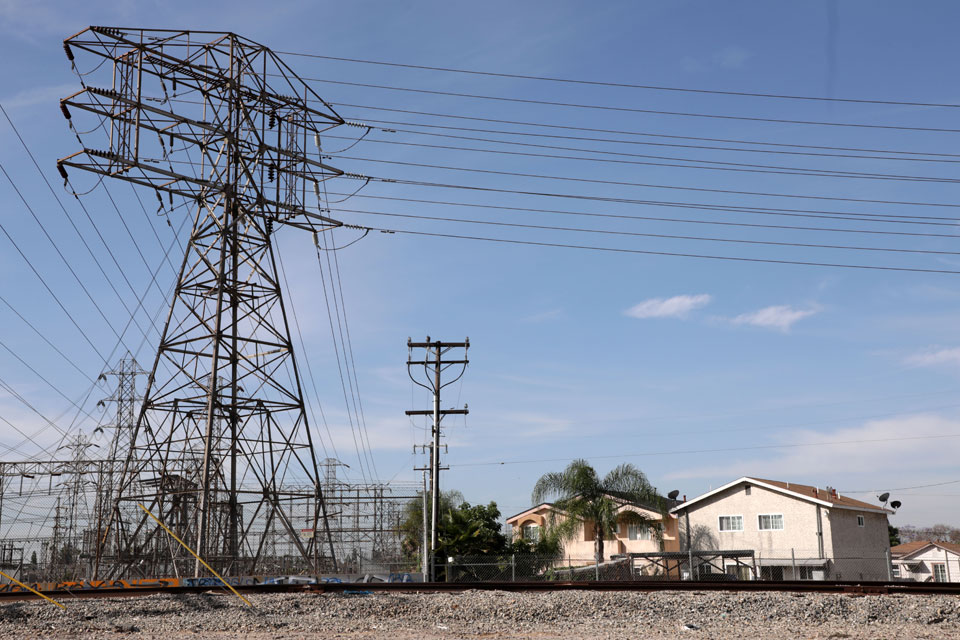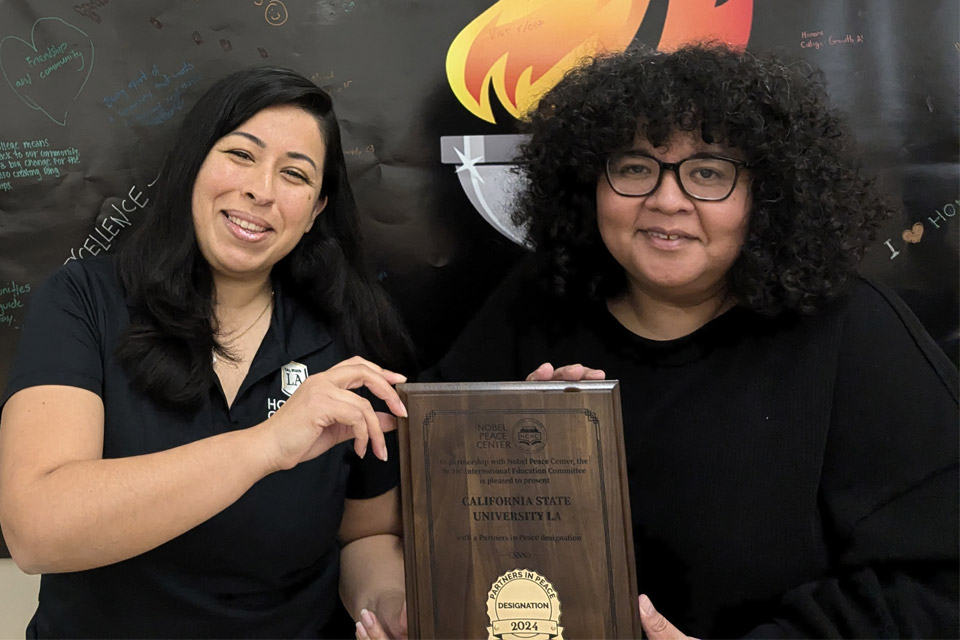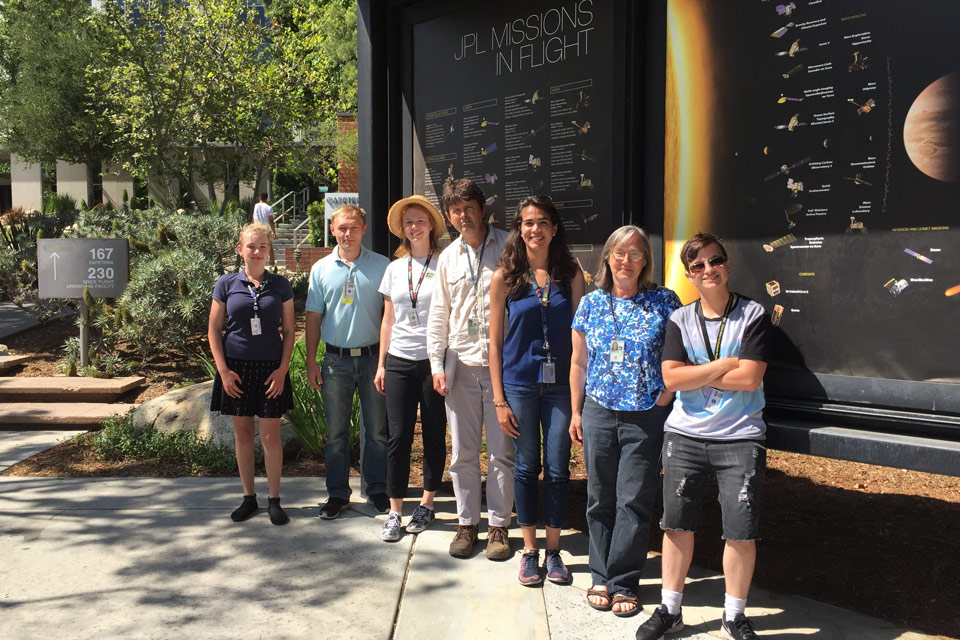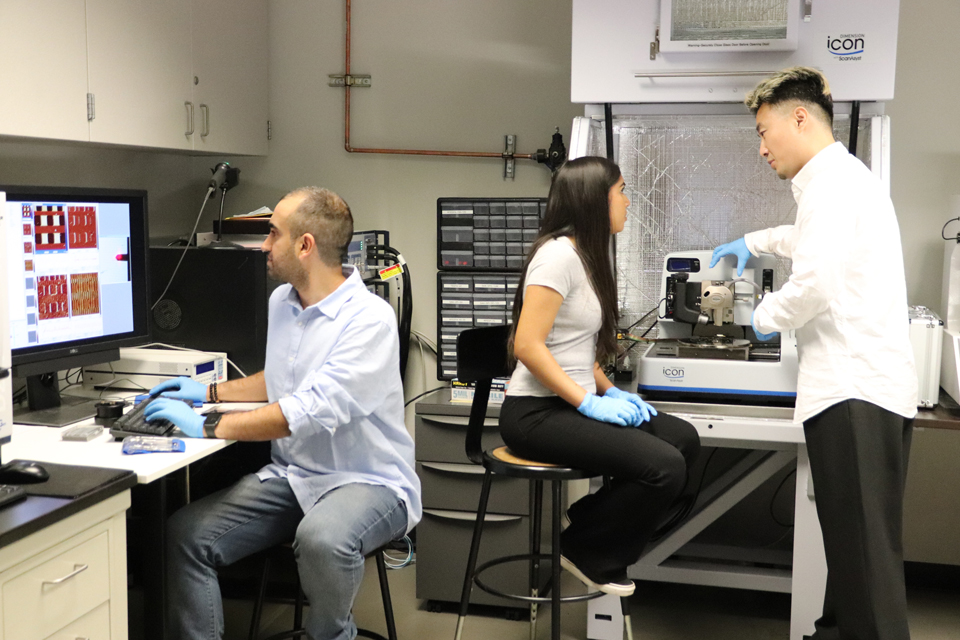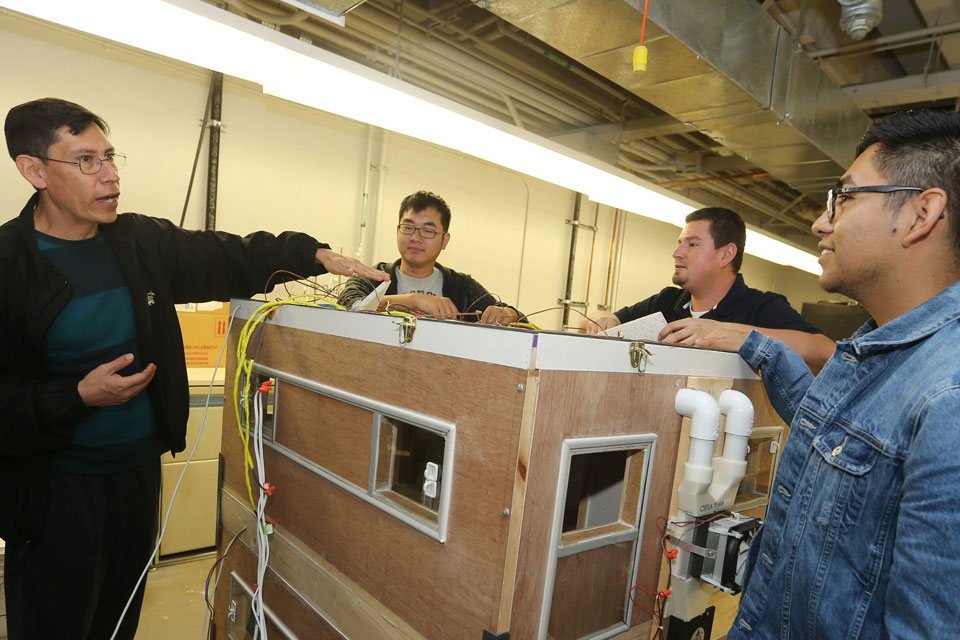A new survey released today by the Pat Brown Institute for Public Affairs (PBI) at Cal State LA reveals severe economic impacts of COVID-19 in Southeast Los Angeles County and neighboring communities served by the university.
The survey of 500 adults provides a quantifiable portrait of historically underserved communities grappling with the devastating effects of the ongoing public health and economic crisis. A majority of area residents have lost their jobs or had work hours reduced and lack options to work from home, according to the findings. Many said they are struggling to pay rent and need financial assistance to stay afloat.
The poll was conducted May 8-14 by Latino Decisions, a leading national polling firm, in partnership with the Pat Brown Institute and the SELA Collaborative, and was made possible by a grant from the California Community Foundation.
The area surveyed includes some of the communities in California hardest hit by the pandemic, and the findings highlight the challenges facing government officials as they attempt to revitalize the economy.
“This survey shines a light on one particular region of Southern California that has often been overlooked but that resembles other places in the state surrounding major cities,” said Raphael J. Sonenshein, executive director for the Pat Brown Institute. “By spotlighting the voices of Southeast L.A. County residents, this ground-level approach will help policymakers to enact solutions that reach the grassroots level and address the crisis where the people are.”
 The survey area included the Southeast Los Angeles County cities of Bell, Bell Gardens, Cudahy, Huntington Park, Maywood, South Gate and Vernon, as well as unincorporated Florence-Firestone and Walnut Park. Also included in the study were the nearby cities and unincorporated areas of Commerce, East Compton, East Los Angeles, Lynwood, Paramount and Rancho Dominguez.
The survey area included the Southeast Los Angeles County cities of Bell, Bell Gardens, Cudahy, Huntington Park, Maywood, South Gate and Vernon, as well as unincorporated Florence-Firestone and Walnut Park. Also included in the study were the nearby cities and unincorporated areas of Commerce, East Compton, East Los Angeles, Lynwood, Paramount and Rancho Dominguez.
The area is home to one of the highest concentrations of Latino residents and undocumented individuals in California, according to a recent report by PBI.
A sizable swath of the area straddles the 710 Freeway and is impacted by pollution from industrial facilities that abut residential neighborhoods. Heavy truck traffic using the freeway to transport goods from the ports of Los Angeles and Long Beach also has contributed to poor air quality in the region.
Since early May, low-income communities in Los Angeles County, including the survey area, have seen COVID-19 infection rates that are higher than those in wealthier neighborhoods, according to reports by Advancement Project California and the Los Angeles Times.
“COVID-19 has magnified the social, economic and health inequities we have faced in the southeast and neighboring areas for years,” said Wilma Franco, executive director for the SELA Collaborative, a network of organizations that includes Cal State LA and aims to strengthen the capacity of the nonprofit sector and increase civic engagement in the southeast area. “Our community has some of the worst air quality in Los Angeles County and residents experience higher rates of asthma, diabetes and heart disease, which means their chances of beating the virus if they contract it could be low.”
The survey found that a quarter of the respondents have lost their jobs and that another 45% have had their hours reduced. A quarter of respondents have less than $100 in savings for emergencies; just over half have less than $1,000 set aside for emergency expenses.
Only 1 in 3 residents said they qualify for and have received a full stimulus check from the federal government, while 24% said they qualify and have not received any support, and 11% said they qualify but have received only partial support.
Of those surveyed, 60% said no one in their household works from home. Many of the respondents, or their family members, are essential workers in occupations such as retail or sales, the restaurant or food industry, and janitorial or cleaning services. Nearly a quarter of respondents said they do not currently feel safe performing their jobs.
For those who have been working from home or have children attending school from home, 88% said they are not receiving assistance from employers or schools to help with expenses. Nearly a third of respondents said both that they do not have enough computers and that Internet access is unreliable.
Of the residents contacted in the survey, 15% said they have been tested for COVID-19, 47% wish to be tested but do not know how or have been unable to, and 36% do not think it is necessary to be tested.
Additionally, a large majority of the respondents said they consider racism against Latinos and immigrants to be a major (58%) or somewhat serious (27%) problem.
Nearly all residents who were interviewed said they are following the pandemic crisis very or somewhat closely. More than 75% are in favor of communities continuing restrictions to stop the spread of the virus despite ongoing economic consequences.
Poll participants were randomly selected from the most recent phone and email databases of residents living in the area. Respondents answered questions online or from a caller by cellphone or landline. The survey was offered in English and Spanish at the choice of the residents, with 43% of surveys being conducted in Spanish. Of the 500 respondents, 450 identified themselves as Latino.
The final survey data were weighted to match the distribution of age, gender and education in the area surveyed. The survey’s margin of error is plus or minus 4.4%.
The poll, conducted under the direction of Latino Decisions co-founder and managing partner Matt Barreto, follows a companion survey conducted Dec. 5-27, 2019, by Latino Decisions for PBI, the California Community Foundation and the SELA Collaborative before the onset of the pandemic.
The Living and Working in SELA survey of 1,017 residents depicted an economically stressed community, but also showed some signs of optimism—with a majority of respondents saying they believed their economic situation had improved over the last five years.
“This important work by PBI and our partners helps amplify the voices and experiences of our community during a critical phase of the pandemic response,” said Cal State LA Executive Vice President Jose A. Gomez, who serves as chair of the PBI Board of Advisers. “This survey will provide vital insight as we work with our community partners to meet the needs of our region.”
Visit the PBI website for more information on the surveys.
Graphic: A map of the area included in the survey. Neighborhood boundaries are from Google Maps. (Credit: Cory Grabow/Cal State LA)
# # #
California State University, Los Angeles is the premier comprehensive public university in the heart of Los Angeles. Cal State LA is ranked number one in the United States for the upward mobility of its students. Cal State LA is dedicated to engagement, service, and the public good, offering nationally recognized programs in science, the arts, business, criminal justice, engineering, nursing, education, and the humanities. Founded in 1947, the University serves more than 26,000 students and has more than 250,000 distinguished alumni.
Cal State LA is home to the critically-acclaimed Luckman Fine Arts Complex, Pat Brown Institute for Public Affairs, Hertzberg-Davis Forensic Science Center, Hydrogen Research and Fueling Facility, Billie Jean King Sports Complex and the TV, Film and Media Center. For more information, visit www.CalStateLA.edu.

